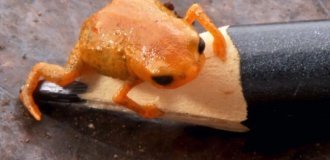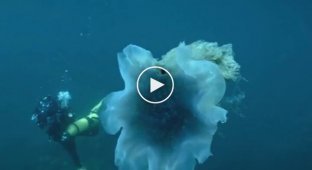Hairy cyanea: a jellyfish the size of a high-rise building (10 photo)
The hairy cyanea is an unimaginable monster of the deep, whose size blurs the line between fantasy and reality. Like a cloud of ice and fire, like a drowned northern light, it furrows the surface of the water and the whole ocean seems like an aquarium to it. Meet the candidate for the title of the longest living creature: this jellyfish grows as big as a 10-story building! 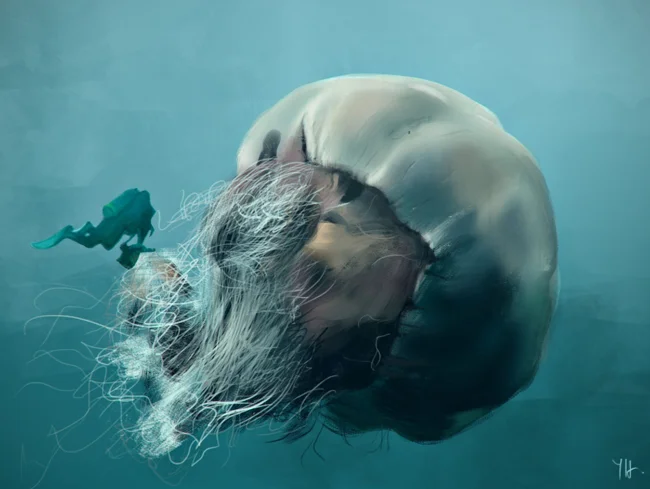
Even though it's a drawing, the artist is not far from the truth.
Honestly? I myself find it hard to imagine a beast so huge. If we compare, the lion's mane jellyfish, or hairy cyanea, would be even longer than a blue whale! Giant mammals grow up to 33 meters, and the largest recorded cyanea had tentacles 36.5 meters long. 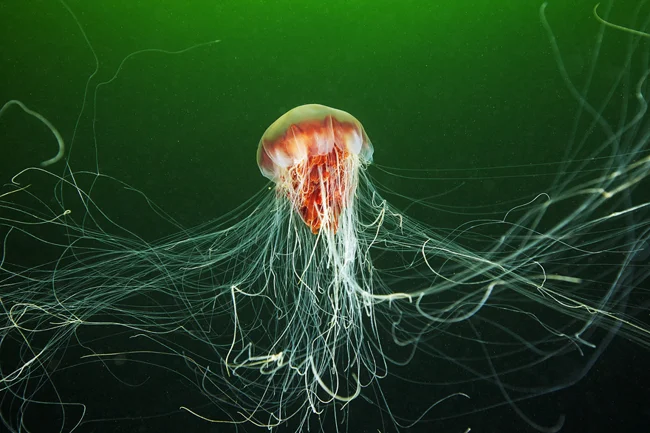
This jellyfish just wants hugs! But no one wants to cuddle with it... A terrible, eternally lonely fate!
Of course, the jellyfish will be hundreds of times lighter - it consists of 98% water. Look - almost transparent! If it weren't for the bright coloring with red and yellow tints, you wouldn't even know where it ends. For such a riot of colors and a bunch of thin tentacles under the dome, the hairy cyanea is called the lion's mane. But how and why does this living jelly grow so huge? 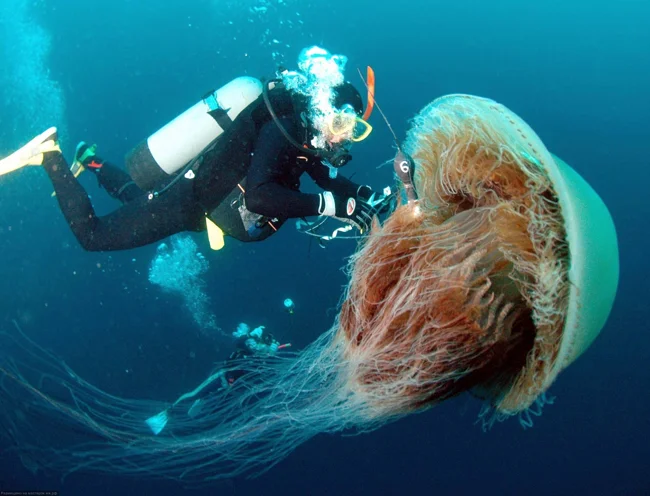
A person hunts jelly in its natural habitat.
Several factors help jellyfish set records. Firstly, the habitat itself contributes to their exorbitant growth. Lion's mane can sometimes be found off the coast of New Zealand and Australia, but their main habitat is in the northern waters of the Atlantic and Pacific Oceans. All animals, including jellyfish, grow more slowly in cold waters than their counterparts in the tropics. But they live longer and can grow tens of times larger during this time. This is how the most gigantic cyanea are obtained - the colder, the longer. And jellyfish that live closer to the tropics grow to only 50 centimeters. 70 times smaller! 
I don't know what's going on here, but it seems like this alien battle scene from a science fiction movie about deep space.
Secondly, the lack of a "stopcock" in the lion's mane plays a role. They grow all their lives! For example, we have it written down at the genetic level what we should grow up to be. And no matter how much Rastishka you drink, you still won't jump higher than your DNA. But jellyfish don't have such a limitation. 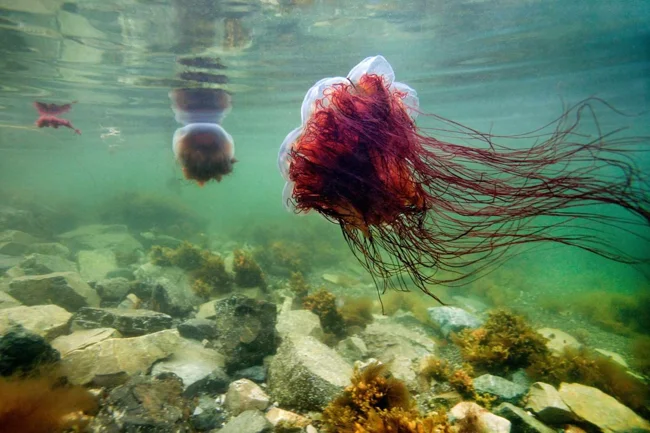
It's scary to imagine what kind of cyanea would grow up if they learned to cook Rastishka!
The bigger the jellyfish gets, the fewer sea creatures look at it as dinner. Only huge turtles and birds could snack on giant cyanides, but reptiles don't swim that far north, and birds won't dive specifically for watery jelly. 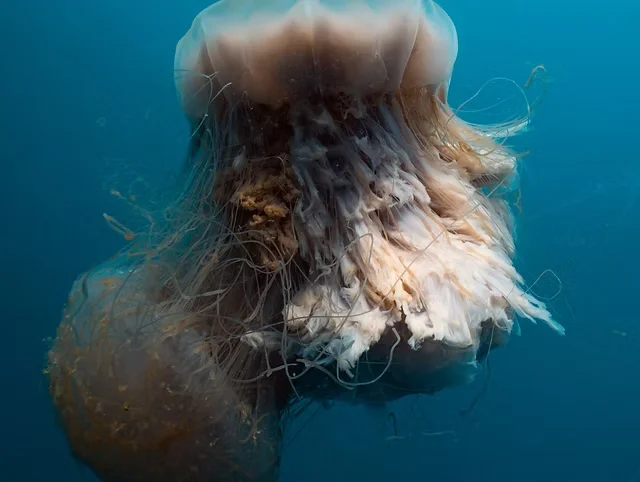
Cyanides can reproduce both sexually and by dividing. Adult jellyfish transfer genetic material to each other through... their mouth. And jellyfish begin dividing at the polyp stage. At this point, they look like mini-palms on the ocean floor.
And thirdly, cyanides grow to the size of a multi-story building thanks to their efficient hunting style. The majestic giants don't bother looking for food, they wait for it to find them. The lion's mane swims no deeper than 20 meters from the surface. The wild waters themselves carry it across the endless expanses of the ocean. Cyanea can only spread its tentacle-hairs tens of meters around itself and wait. 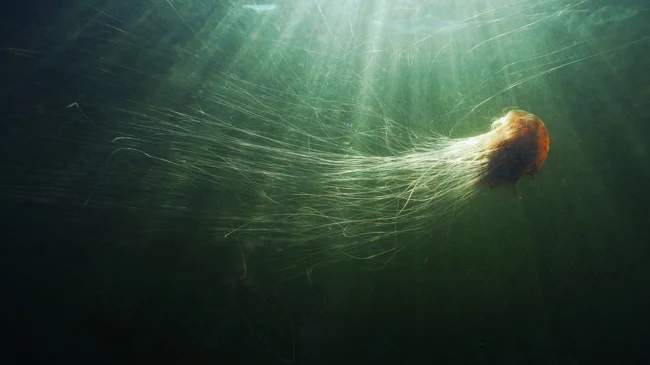
I'm certainly not Rapunzel, but you can get tangled in my hair too!
Each of them has many stinging cells. Their structure resembles that of a harpoon. A sensitive hair detects movement. As soon as something touches the tentacles, the poisoned sting-stiletto automatically shoots into the body of the victim. Or the offender - this is another reason, in addition to the size, why no one hunts jellyfish. 
The structure of the stinging cell.
The stinging cell toxins instantly paralyze small fish and anyone else within the radius of the effect, including other jellyfish. The food is then drawn into the dome, where it is digested. 
Some small fish have learned to use huge cyanide as a home and a dining room at the same time. They hide under the dome, protecting themselves from predators, and eat what the jellyfish drops or spits out.
For a person, an encounter with a lion's mane is practically safe. Yes, it will be unpleasant to get entangled in its stinging tentacles, but apart from a rash and a possible allergic reaction, nothing will happen. Its poison is too small to seriously harm us. Moreover, it is safer to observe it in the water than from the shore. With storms and tides, jellyfish are regularly washed up on the beach. The animals die, but their tentacles remain just as stinging! In the USA, about 150 people have suffered from a single cyanide! 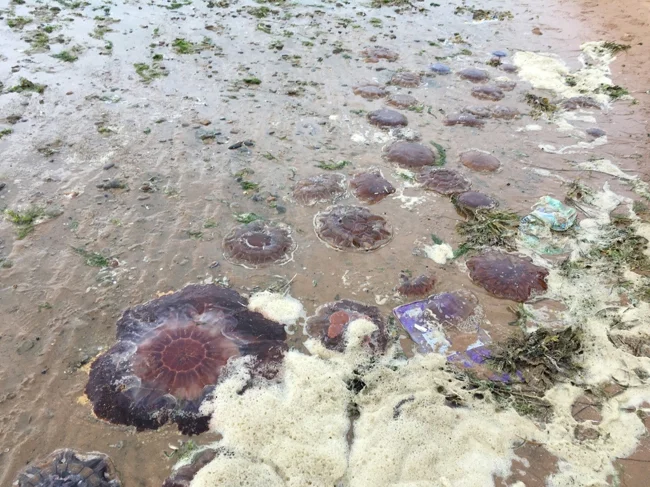
It's best not to touch these saucers on the shore. The tentacles of the jellyfish are not visible, but in fact, they are scattered all over the shore!
The lion's mane is a work of art created in a joint creative impulse of the ocean and evolution. To feel the power of the elements without harming your health, observe the jellyfish as if it were a valuable exhibit in a gallery - only from a distance!








